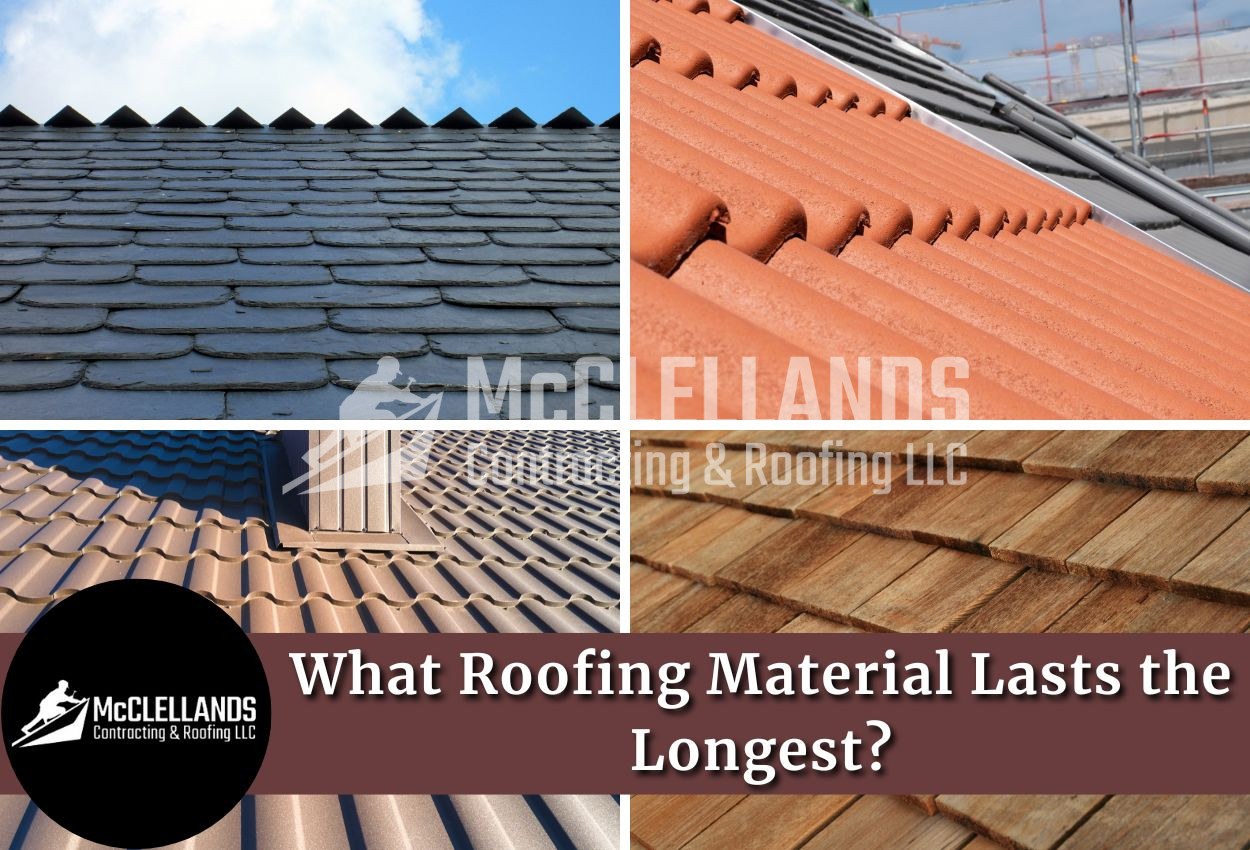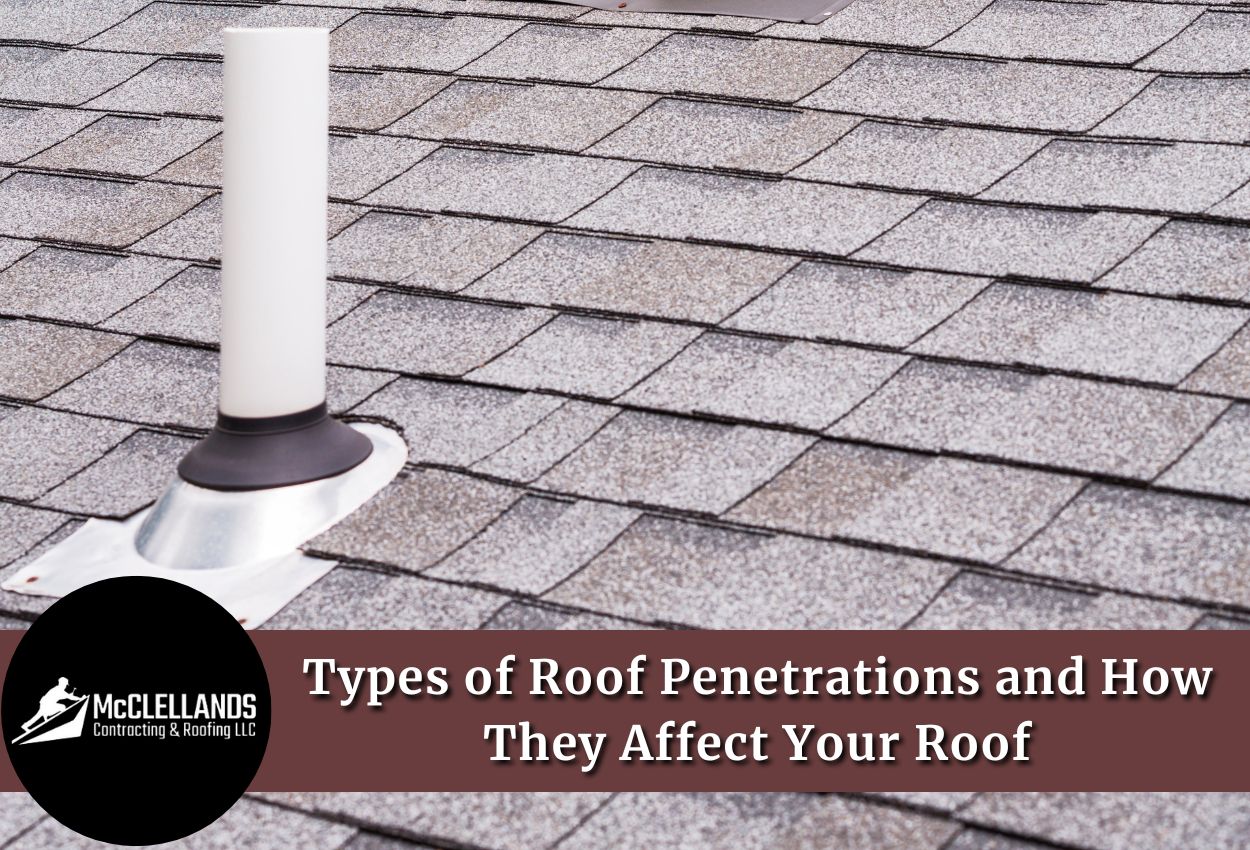Just like choosing the right roofing materials, you also have to plan the pitch of your roof correctly. Your roof's drainage system, among other things, is directly dependent on your roof's pitch.
At McClellands Contracting and Roofing, LLC, we are your local roofers in Pittsburgh, PA. In this article, we will walk you through the role and importance of roof pitch in your home's functionality and design. We will also discuss how to choose the right roof pitch for your home.
For a no-obligation discussion with our professional roofers, feel free to give us a call at (412) 353-5660 today!
What Is Roof Pitch and Why Is It Important?
Roof pitch is simply the measurement of your roof's steepness or incline. Roof pitch tells you how many feet your roof rises in relation to its span. This measurement is important because it affects many aspects of your home's design.
Your roof's pitch helps determine how well water and snow drain from your roof, which directly impacts your home's protection against moisture damage.
A proper roof pitch also ensures proper ventilation in your attic space, helps maintain comfortable indoor temperatures, and affects your home's overall appearance.
Perhaps most importantly, your roof's pitch determines what types of roofing materials you can use and how long your roof will likely last.
What Is The Geometry Of A Roof?

To understand roof pitch better, we will start with understanding the geometry of a roof. The basic structure of your roof follows the principles of a right triangle, which makes it easier to understand and measure its angles and proportions.
Your roof's overall geometry has three main components:
👉 Rise
This is the vertical height of your roof, measured from where it starts at the wall to its highest point at the ridge.
👉 Run
This represents the horizontal distance from your roof's edge to the point directly under its peak.
👉 Span
This is the total horizontal distance your roof covers, measured from one outer edge to the other.
These basic elements can help you understand how roof pitch works in practical terms. When builders talk about roof pitch, they refer to the relationship between the rise and span, which is expressed as a fraction.
For example, if your roof rises 10 feet for a 20-foot span, we say it has a “1 to 2” pitch or 1/2 pitch.
What Is The Difference Between Slope and Pitch?
Homeowners often get confused between roof pitch and roof slope and use these words interchangeably, but this is not correct. Both terms are quite different!
👉 Slope: The slope of your roof is a simple incline that is expressed as a ratio of vertical rise to horizontal run. For example, a slope of 4:12 means your roof rises 4 inches for every 12 inches of the horizontal distance.
👉 Pitch: On the other hand, as we've already discussed, your roof's pitch measures the rise of your roof in relation to its entire span (the total width of your roof). For example, if your roof rises 8 feet over a 24-foot span, it has a "1 to 3" pitch, which can be written as 1/3.
In today's roofing industry, most professionals use slope measurement (rise over run) because it's more practical for modern roof designs with varying sections and angles.
What Are The Minimum Slope Requirements For Your Roof According To International Residential Code (IRC)?
When you're planning a roof replacement or new installation, one important thing to remember is not every roofing material works with every pitch.
While much of this article focuses on the pitch, modern roofing standards use slope measurements (rise over run) to determine material requirements.
Below, we use slope (e.g., 2:12) instead of pitch (e.g., 1/6) because the IRC provides slope-based guidelines for homeowners to decide the roof pitch.
👉 Let's say you're thinking about using asphalt shingles, which are the most common roofing material in the U.S. For these, you'll need at least a 2:12 slope. This means your roof should rise at least 2 inches for every 12 inches of the horizontal distance.
👉 However, if your roof's slope falls between 2:12 and 4:12, you'll need special underlayment installation to ensure proper protection.
👉 Different materials have different needs. For example, if you're considering clay or concrete tiles, you'll need a slightly steeper slope, at least 2½:12.
👉 Metal roofs have more flexibility. Standard metal panels need a 3:12 slope, but if you choose a standing-seam system, you can go as low as ¼:12.
👉 For traditional materials like slate or wood shingles, you'll need even steeper pitches. Slate shingles work best with at least a 4:12 slope, while wood shingles and shakes need a minimum of 3:12.
These requirements help ensure proper water drainage and prevent moisture damage to your roof.
What Problems Can Arise from an Incorrect Roof Pitch?
Choosing the wrong pitch for your roof can lead to issues that affect your home's safety and comfort. Understanding these potential problems helps you see why getting roof pitch right is so important.
#1 Drainage Problems
The most immediate concern when it comes to roofs is usually water-related. When your roof's pitch is too low for your chosen material, water might not drain properly.
This can result in pooling, which puts extra weight on your roofing system and can cause leaks over time.
In winter, improper drainage may also lead to ice dams, which can damage your roof and gutters.
#2 Inadequate Ventilation In Your Home
Your roof's pitch also affects your home's ventilation. A properly pitched roof helps create natural airflow in your attic space. We will discuss this in more detail later in this article.
Without this, you might notice higher energy bills because your heating and cooling systems have to work harder. Additionally, poor ventilation can result in moisture buildup with time. This may cause mold growth and reduce your insulation's effectiveness.
#3 Negative Impact On Your Home’s Appearance
Many homeowners don't realize that an incorrect roof pitch can also affect the value of their home.
Beyond the practical issues, your roof's pitch plays a big role in your home's appearance.
A pitch that doesn't match your home's architectural style might make it less attractive to future buyers. Plus, if your roof's pitch doesn't meet local building codes, you might face problems when trying to sell your home or file insurance claims.
Does Roof Pitch Affect Your Home's Energy Efficiency?
As we have discussed, improper roof pitch can result in ventilation problems, which we will elaborate on here!
While you might not know this, roof pitch plays an equally important role in maintaining the overall energy efficiency of your home. Understanding this connection can help you make better decisions about your roofing system and potentially save money on your energy bills.
A well-designed roof pitch creates a stack effect. This natural ventilation occurs when hot air rises through your attic and escapes through your roof vents. The steeper your roof's pitch, the more effective this natural airflow becomes.
This means your attic stays cooler in summer and drier in winter, which helps your home maintain comfortable temperatures more efficiently.
The pitch of your roof also affects how much direct sunlight your home receives. In warmer climates, a steeper pitch on the south-facing side of your roof can provide natural shade during summer months when the sun is high.
During winter, when the sun is lower, this same pitch allows beneficial solar heat gain. This natural temperature regulation can help reduce your heating and cooling costs throughout the year.
Your roof's pitch also influences the effectiveness of solar panels if you're considering solar energy. Most solar installers prefer an angle between 30 and 45 degrees (about 7/12 to 12/12) for optimal solar panel performance. However, they can work with other pitches by using mounting brackets to achieve the ideal angle.
How Different Climate Zones Affect Roof Pitch
The climate where you live should influence your choice of roof pitch. Different weather conditions create different demands on your roof, and choosing the right pitch can help your roof handle these challenges more effectively.
#1 Snow-Prone Areas
If you live in an area that gets heavy snow, like many parts of Pennsylvania, you'll want to consider a steeper pitch, at least 1/2.
This steeper angle slows the natural sliding of snow from your roofs and this helps prevent excessive weight buildup that could stress your roof's structure. It also reduces any risk of ice dams forming at your roof's edge.
#2 High-Wind Regions
In areas prone to strong winds, moderate roof pitches between 1/6 and 1/2 generally perform really nicely.
These pitches provide enough slope for good drainage while also presenting less surface area to strong winds.
This helps lower the risk of wind damage and potential uplift that could compromise your roofing materials.
#3 Rainy Climates
For regions that see frequent rain, a pitch of at least 1/6 helps with proper water drainage. While lower pitches can work with certain roofing materials, a moderate to steep pitch provides better long-term protection against water damage and reduces the risk of leaks.
#4 Hot, Sunny Areas
In hot climates, a steeper pitch can actually help reflect some of the sun's heat away from your home. Combined with light-colored roofing materials, this can contribute to better energy efficiency and lower cooling costs.
Why Should You Hire Professional Roofers?
Getting your roof's pitch right isn't just about following a formula. It requires experience, technical knowledge, and the right tools. This is why working with professional roofers makes such a difference in your roofing project's success.
Professional roofers understand how different factors affect your roof's performance. They know your local climate, building codes, and how various roofing materials work with different pitches. They can help you choose the right pitch that not only meets code requirements but also works well for your specific situation.
These experts also have access to professional-grade tools and equipment. While you might be able to take basic measurements with a level and tape measure, professionals use specialized tools that guarantee accuracy. They can also safely work on steep pitches and handle complex installations that might be dangerous for homeowners to attempt.
Working with professionals also gives you important protections. Reputable roofing companies carry insurance and offer warranties on their work. This means you're covered if something goes wrong during installation or if problems develop later. They'll also provide proper documentation of the work done, which can be important for your home's records and future sales.
Get Professional Roofing Services in Pennsylvania
At McClellands Contracting and Roofing, LLC, we understand that your roof is one of your home's most important components.
Our team brings years of experience to every project and guarantees your roof is installed right and performs well for years to come.
We take pride in our detailed approach to roofing. Before any work begins, we carefully assess your home's needs and discuss your options with you.
Our trusted team is here to help you choose the right pitch for your new roof or address any issues with your existing roof's pitch.
We understand Pennsylvania's climate challenges and know exactly what your roof needs to perform well in our local weather conditions.
We believe in doing things right the first time and never compromise on quality. When you work with us, you can trust that your roof will be installed according to all current building codes and manufacturer specifications.
Ready to discuss your roofing needs? Call us today at (412) 353-5660 for a free, no-obligation consultation.




